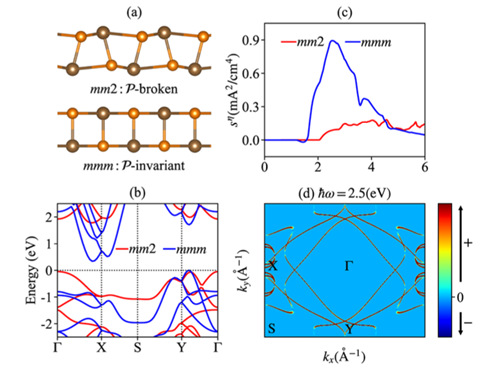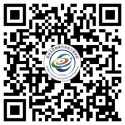Recently, Professor Jian Wang's team from the College of Physics and Optoelectronic Engineering at Shenzhen University published a research paper titled "Quantifying the photocurrent fluctuation in quantum materials by shot noise" in the comprehensive journal Nature Communications (Impact Factor 16.6, Tier 1 journal in the Chinese Academy of Sciences). This work, published in Nat. Commun. 15, 2012 (2024), theoretically proposes that photocurrent shot noise can be used to explore the quantum geometric properties of centrosymmetric quantum materials.
The bulk photovoltaic effect plays a crucial role in the design of optoelectronic devices and solar energy conversion. Originating from intrinsic second-order nonlinear photocurrent responses such as shift photocurrent and injection photocurrent, recent studies indicate that these second-order nonlinear photocurrents can also be employed to investigate the topological and quantum geometric properties of quantum materials. For instance, experimental research has demonstrated that second-order nonlinear injection photocurrent can measure the topological charge of Weyl points in topological Weyl semimetals. However, as a type of second-order nonlinear response, second-order nonlinear photocurrents can only exist in quantum materials with broken centrosymmetric symmetry. Furthermore, the observed photocurrent in experiments represents only the statistical average of the photocurrent operator. Apart from the statistical average, the quantum fluctuations of the photocurrent also carry significant information, for which there is currently no theoretical framework.
Professor Jian Wang and colleagues utilized nonlinear response theory to develop a quantum theory of second-order DC shot noise in insulators. They divided the second-order photocurrent operator into non-diagonal and diagonal parts, obtaining displacement and injection DC shot noise, respectively. Through symmetry analysis, they found that both types of second-order DC shot noise are not restricted by spatial inversion symmetry and can appear in centrosymmetric quantum materials. This study revealed a close correlation between second-order DC shot noise and the quantum geometric tensor of quantum materials, including Berry curvature and quantum metric. Finally, by combining the developed shot noise theory with first-principles calculations, the researchers predicted the second-order DC shot noise in two-dimensional materials GeS and MoS2. The calculations showed that the second-order DC shot noise in the centrosymmetric phase (mmm) of GeS is stronger than in its non-centrosymmetric phase (mm2), as depicted in Figure 1.
This research indicates that the quantum fluctuations of photocurrents and the second-order photocurrent itself can serve as complementary tools to characterize the band geometric properties of quantum materials. The insulator shot noise theory proposed in this paper, together with the thermal Hall noise theory published by the team in January 2023 [Phys. Rev. Lett. 130, 036202 (2023)], collectively establish a quantum noise theory framework based on the language of quantum geometric tensors.

[Figure 1: Second-order DC shot noise in GeS]
Dr. Longjun Xiang, a postdoctoral researcher in Professor Jian Wang's team, is the first author of the paper, with Professor Jian Wang as the corresponding author and Associate Professor Hao Jin participating in the research. Shenzhen University is both the first unit and the corresponding unit of this research. This work was supported by the National Natural Science Foundation of China. The paper can be accessed via the following link::https://www.nature.com/articles/s41467-024-46264-1。
Additionally, Professor Jian Wang's team published research work in Physical Review B in 2024 on Hall effect theory and quantum spin transport, including:
(1) Theoretical prediction of intrinsic in-plane magnetic Hall effect in Weyl semimetal materials, discussing the influence of the Zeeman effect on this Hall effect and proposing experimental verification strategies. Dr. Longjun Xiang is the first author, and Professor Jian Wang is the corresponding author .The paper can be accessed via the following link:https://journals.aps.org/prb/abstract/10.1103/PhysRevB.109.075419
(2) Theoretical prediction of first-order displacement current Hall effect caused by quantum metric, which is an intrinsic first-order Hall effect that does not break time-reversal symmetry, corresponding to the first-order Hall effect caused by Berry curvature that breaks time-reversal symmetry, enhancing the linear response theory of Bloch electrons. Dr. Longjun Xiang is the first author, with Professor Bin Wang and Professor Jian Wang as co-corresponding authors.The paper can be accessed via the following link:https://journals.aps.org/prb/abstract/10.1103/PhysRevB.109.115121
(3) Investigation of the influence of spin transport characteristics in disordered metal/ferromagnetic insulator composite structures using full counting statistics combined with coherent potential approximation methods, and discussion on the inhibitory effect of strong anisotropic hopping energy in staggered magnets on spin transport. Dr. Gaoyang Li is the first author, and Professor Jian Wang is the corresponding author.The paper can be accessed via the following link:https://journals.aps.org/prb/abstract/10.1103/PhysRevB.109.125403


![]() Add : No. 3688, Nanhai Avenue, Nanshan District, Shenzhen, Guangdong Province
Add : No. 3688, Nanhai Avenue, Nanshan District, Shenzhen, Guangdong Province ![]() Email : cpoe@szu.edu.cn
Email : cpoe@szu.edu.cn ![]() Phone: 0755-26538735
Phone: 0755-26538735 ![]() Fax : 0755-26538735
Fax : 0755-26538735